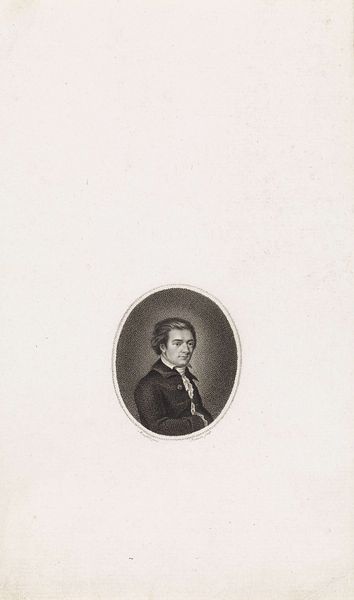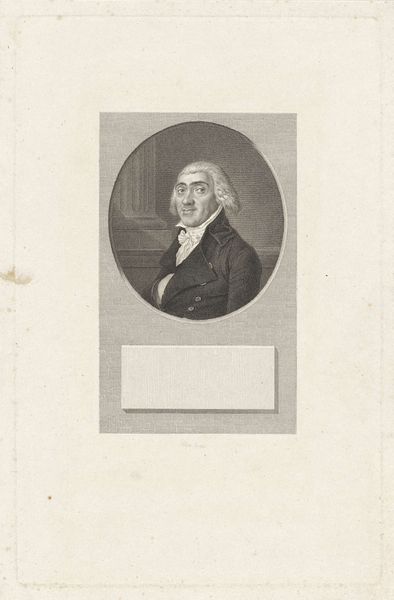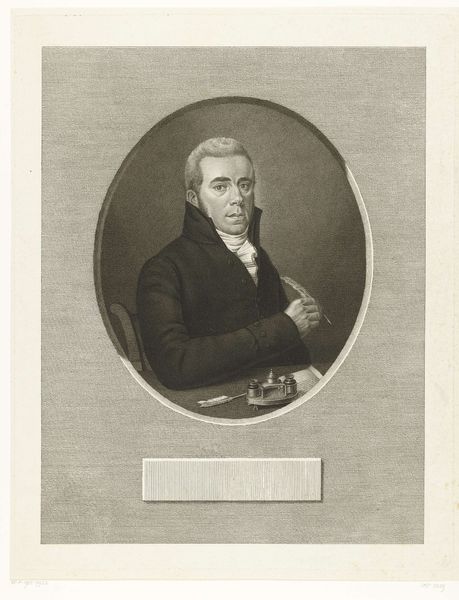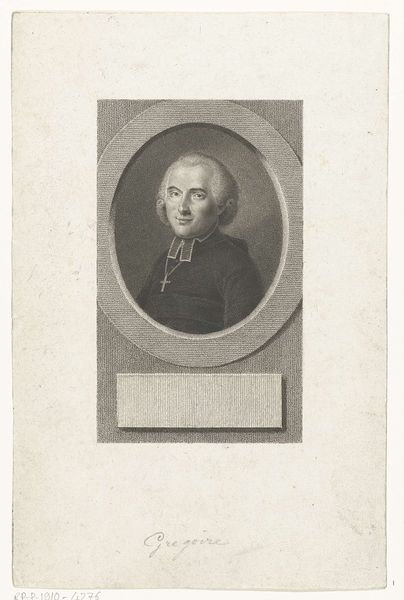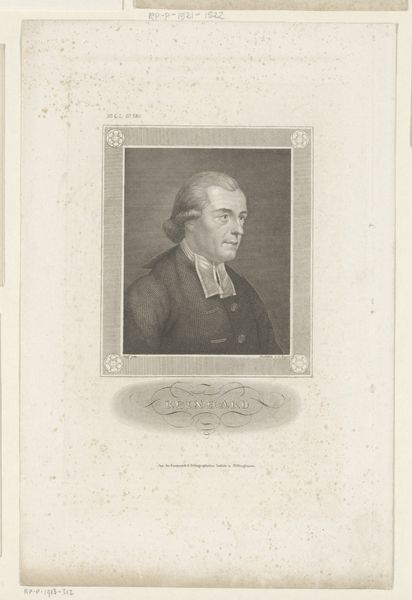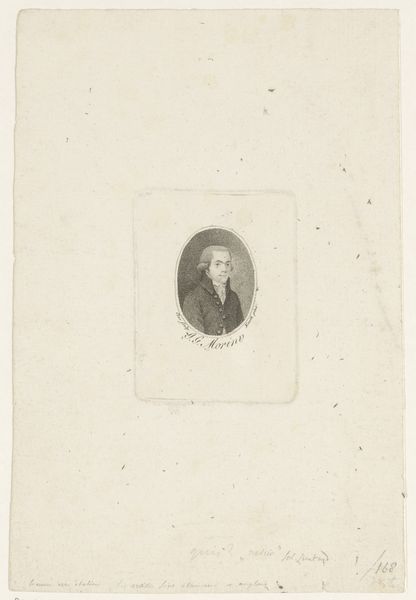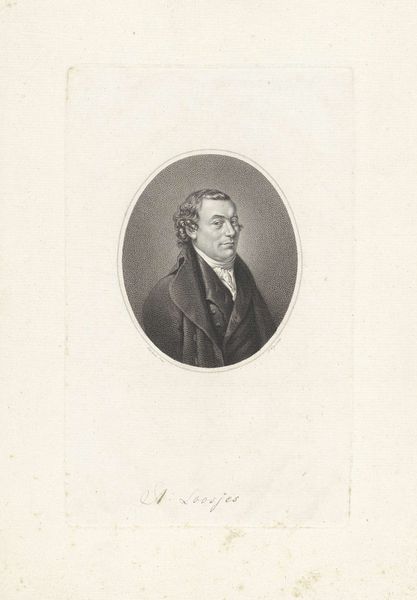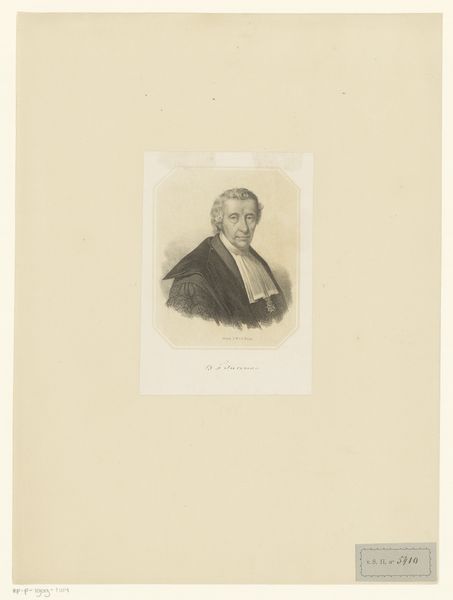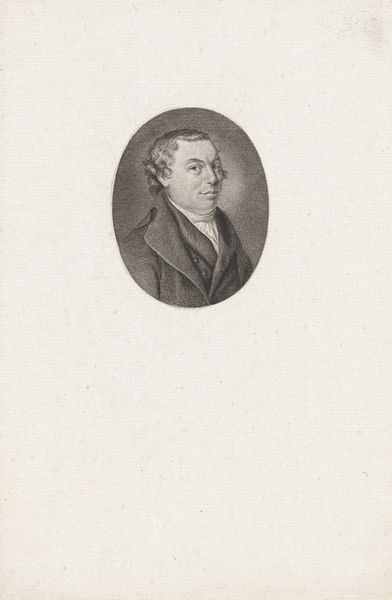
engraving
#
portrait
#
neoclacissism
#
history-painting
#
academic-art
#
engraving
Dimensions: height 265 mm, width 173 mm
Copyright: Rijks Museum: Open Domain
Editor: Here we have Reinier Vinkeles' "Portret van Willem V, prins van Oranje-Nassau" from 1806. It's an engraving, and I immediately notice the subject’s rather stoic and formal presentation. It gives off a very traditional and stately mood. What do you see in this piece? Curator: What strikes me is the oval frame. In this era, the oval often functioned as a symbolic womb or vessel, representing not just portraiture but the "birth" or emergence of an idea of leadership, solidified in the visual language of power. Editor: Oh, interesting! Like the idea of leadership being "born" into him? Curator: Precisely. The symbols layered onto his person– the clothing, the star—they tell us a story beyond individual likeness. Consider how the engraver meticulously renders details. What purpose might that serve? Editor: Perhaps to reinforce authority through precision and clarity? It lends an air of unimpeachable truth, right? Curator: Yes, truth carefully constructed. Also notice that plaque. It awaits inscription, ready to be filled with the Prince’s virtues and achievements. It becomes a place where the future might write itself onto the present, almost like a symbolic promise. Editor: It’s amazing how much is communicated through these subtle choices! I'll definitely look at portraits differently from now on. Curator: It’s like looking through a keyhole into a world of hidden meanings. We learn that images aren't neutral; they're laden with cultural memories.
Comments
No comments
Be the first to comment and join the conversation on the ultimate creative platform.
